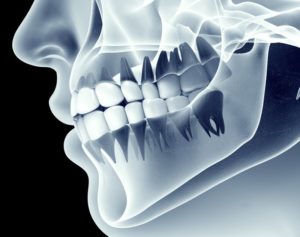An Orthodontist Explains How Bone Metabolism Affects Teeth
March 10, 2019
 The human body is a remarkable creation. It is constantly creating new cells and replacing old ones. Even seemingly static structures, like your bones, are always changing in miniscule ways. The cycle of bone growth and resorption is known as bone metabolism, and it can have a profound effect on your smile. An orthodontist in Richardson is here to explain this fascinating relationship.
The human body is a remarkable creation. It is constantly creating new cells and replacing old ones. Even seemingly static structures, like your bones, are always changing in miniscule ways. The cycle of bone growth and resorption is known as bone metabolism, and it can have a profound effect on your smile. An orthodontist in Richardson is here to explain this fascinating relationship.
Bones and Your Teeth
According to a common misconception, bones are teeth. However, that isn’t true. Although they contain many of the same minerals, teeth have a different structure and function than bones. They’re also slightly harder than bones. It’s also important to know that your bones and your teeth and not fused together. Rather, tiny ligaments attach the teeth to the bone that supports them.
How Bone Metabolism Leads to Tooth Movement
Bone health depends on a number of factors, including genetics and nutrients. Without an adequate supply of minerals to keep them strong, the bones may begin to lose density and mass. When that happens to the jawbone, the loss in bone density may cause the teeth to drift out of place. As a case in point, consider a recent scientific study that compared two groups of animals. Animals that ate a diet with plenty of calcium experienced little to no tooth shifting over time. However, the animals in the experimental group, which consumed less calcium, experienced bone deterioration in the jaw, which lead to some of their teeth shifting out of their original places.
Dental drift may occur for reasons that go beyond diet. It is especially noticeable in individuals who have lost a tooth; without a tooth root to stimulate it, the jawbone tends to deteriorate much more quickly than other bones. Some shifting may also occur as individuals grow older and experience natural changes in their bone structure.
Achieve and Maintain a Well-Aligned Smile
A balanced diet that is rich in calcium and other vital nutrients can help your bones to stay in good shape, and thus help your teeth to remain in their proper places. However, if you naturally have misaligned teeth, or tooth loss or other factors has already caused your teeth to shift, you’ll need professional help to gain a healthy, well-aligned smile.
Orthodontic treatment, such as Invisalign or braces in Richardson, applies gentle pressure to the teeth. Since the tooth ligaments allow for small, gradual movements, your teeth will eventually be relocated into their proper positions. Thereafter, maintaining your bone health and wearing your retainer should ensure that every member of your smile stays in its assigned place for decades to come.
Your bones and your teeth have a strong connection in more ways than one! Looking after your oral and overall health can help your bones, your smile, and your whole body thrive.
About the Author
Dr. Jan Ortiz is an orthodontist who provides braces, Invisalign in Richardson, and other treatments to help patients achieve and maintain well-aligned, healthy smiles. If you’re interested in repositioning your teeth or you have questions about how to look after your oral health, contact our team today at 972-479-1200.
No Comments
No comments yet.
RSS feed for comments on this post.
Sorry, the comment form is closed at this time.
